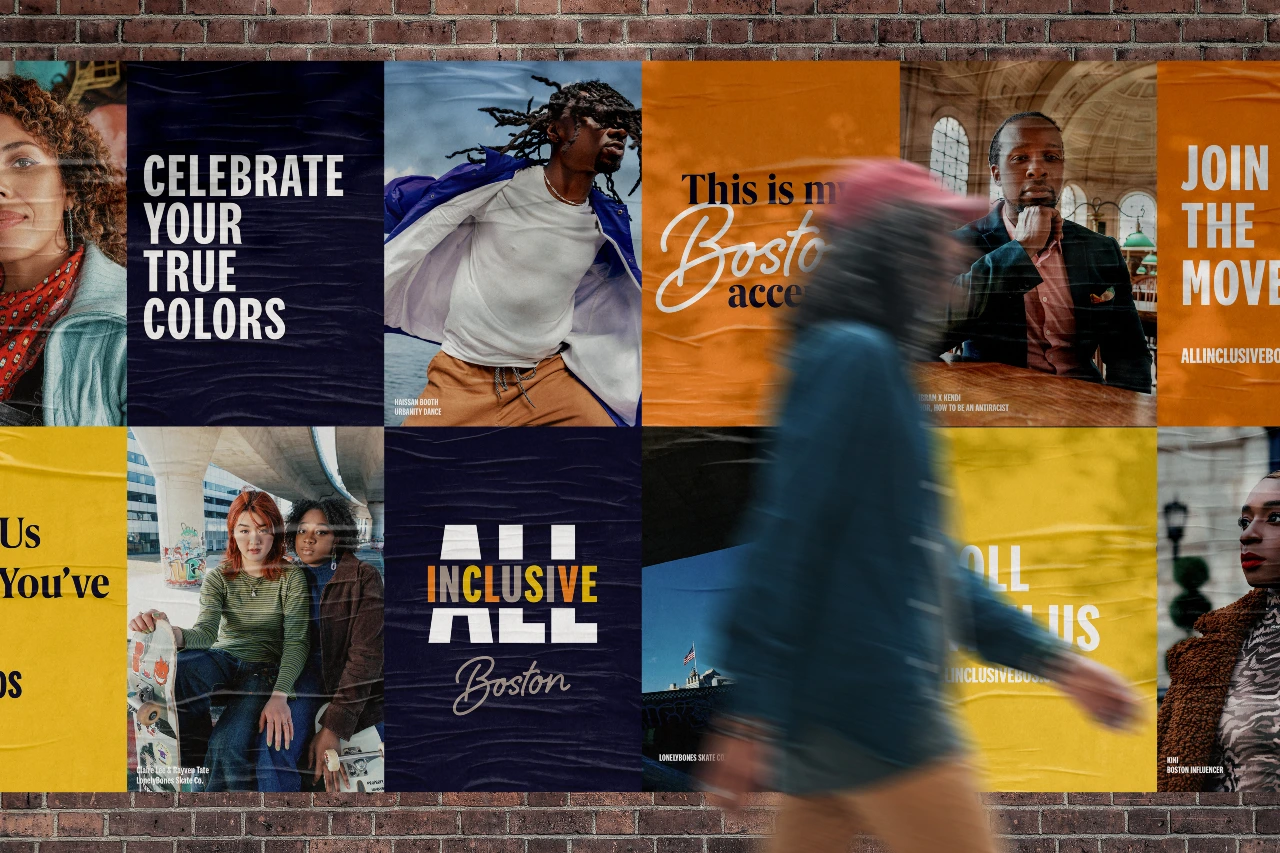
Boston has a hip food scene, historic sites, cultural landmarks, innovative tech and healthcare hubs. It’s a city as scenic and walkable as its shoreline. After the height of the pandemic, the city was looking for ways to reopen, reset and encourage travellers and tourists to experience the city first-hand and drive much-needed revenue back to Boston.

However, initial research and market intelligence showed that perceptions of Boston were keeping some tourists from visiting. Boston’s reputation was that it is full of pretentious Ivy Leaguers, aggressive sports fans and crazy drivers. The city didn’t read like a welcome mat. A larger and more insidious issue was the perception that Boston is a racist city.
Research showed that people believed that Boston was overwhelmingly white, male, conservative, competitive, and largely unwelcoming to outsiders. These findings stand in contrast to the reality that is Boston’s residential make-up: a majority-minority city in which less than 50% of residents identify as white, 25% black, 20% Hispanic and 9% Asian.
To reopen effectively, the city would need to address those negative perceptions at the core, but also change the narrative Bostonians tell themselves – that Boston isn’t diverse. The tourism campaign would need to show the truth: Boston is a much more vibrant, progressive and flavourful city than residents and outsiders alike give it credit for.
Amid the backdrop of racially motivated murders, such as the death of George Floyd, the city made a concerted and ambitious move to shift the narrative and double down. Boston funded its largest single campaign, besides construction, and gave it to exclusively black and minority-owned businesses.
Fighting perceptions of racism in Boston
In partnering with local black and minority-owned businesses, Boston invested in a multi-year tourism campaign called “Boston All Inclusive”, which encouraged residents and visitors alike to see Boston as the diverse, welcoming and vibrant city that it’s growing into, but isn’t always portrayed in popular media.
The campaign was developed by showing real people, in real situations and real locations, that make Boston the warm, engaging, economically and culturally diverse city that it is. It drove visitors to traditionally under-visited businesses and neighbourhoods – including Roxbury, Dorchester, Jamaica Plain, Chinatown, and East Boston, which were some of the hardest hit economically by the pandemic.
Within the campaign, the word “Boston” appeared as a hand-drawn signature, emphasising the impact each person has on this hub. The imagery was shot from an authentic lens, by local black artist and photographer Harry Scales.
One of the most essential elements of the campaign was location tagging – in every application. Featured businesses and neighbourhoods were labelled to build awareness and support wayfinding of the under-visited areas in the city.
The campaign also included bold promotional tactics, like the lighting of the city’s iconic Zakim Bridge, prime-time Celtics Games Jumbotron advertisements ads, Boston Red Sox pre-game feature and sponsoring a unique new segment on NBC10 that shows residents in Massachusetts and Southern New Hampshire all the city has to offer.
The multi-year campaign effectively targeted both Boston locals and a market within a five-hour radius of Boston, including reaching people in Connecticut, New York, Rhode Island, New Jersey, New Hampshire, Vermont and Maine.
The campaign was tailored to reach an age range between 25–54 and at a high-level focused on people with a propensity to travel. It also focused on attracting black, brown, Asian, Latinx, and LGBTQIA+ travellers who are foodies, art and culture enthusiasts, family vacationers, history buffs, and locals looking for a meaningful staycation.
A campaign for lasting change
Boston All Inclusive publicly demonstrated that Boston is more than aggressive sports fans and crazy drivers; it’s a city full of culture, of history made each day, of people connecting through a shared vision for the future. According to Boston Mayor Michelle Wu, advertising work helped bring more than 4,000 visits to the city, despite the pandemic.
Statistics fuel creative work, but on an emotional level, the campaign was a major step forward in representing the real Boston. The campaign helped all of Boston’s residents, neighbourhoods, businesses, hotels, cultural institutions, and destinations emerge together.
“When we see our collective connection and shared prosperity as the ultimate goal, we are all stronger,” said Mayor Michelle Wu about the campaign.
[Read more: How branding can show people’s love for a place and help highlight local challenges]






